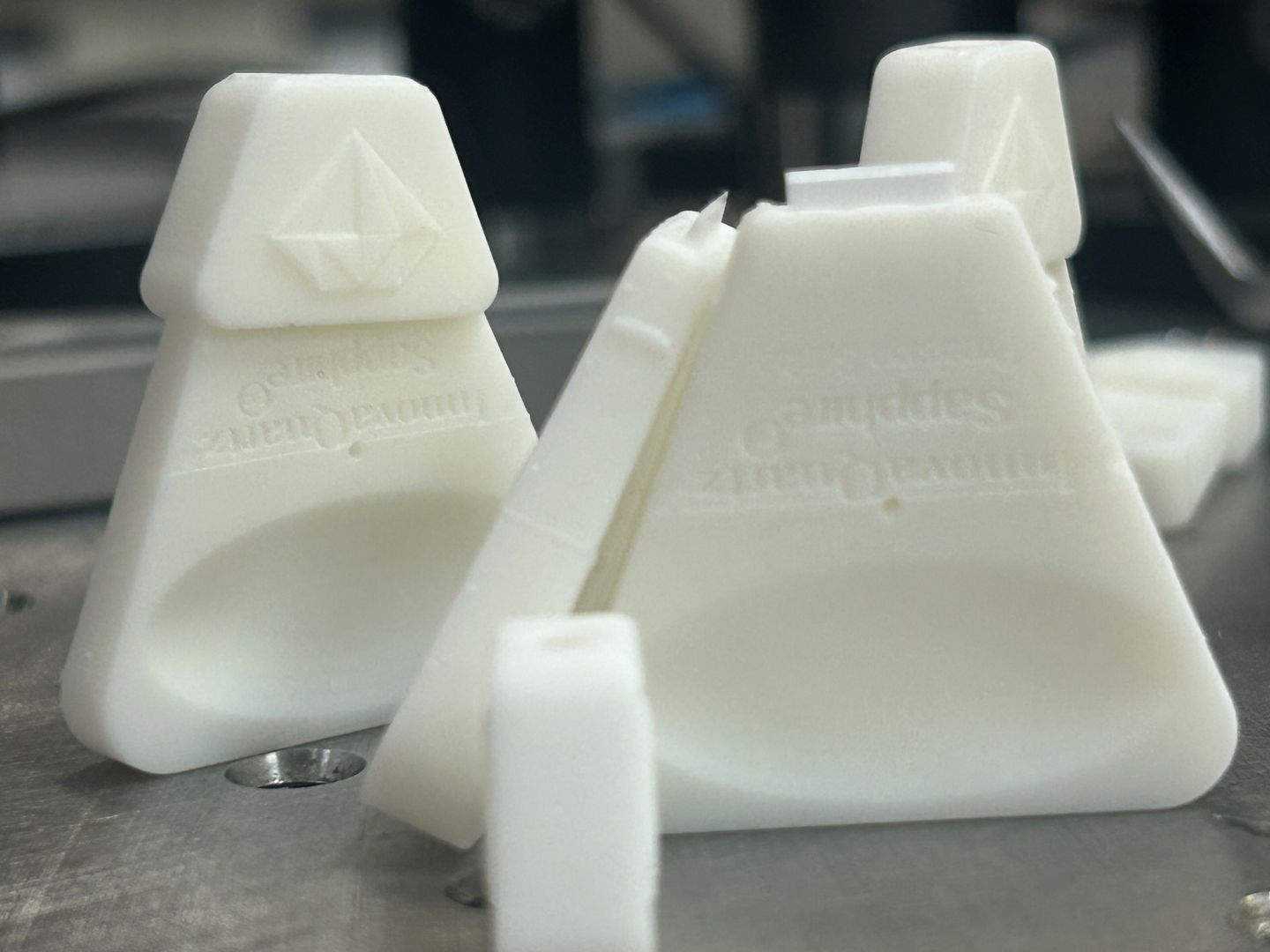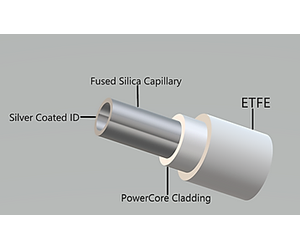

- Home
- Companies
- InnovaQuartz LLC
- Products
- InnovaQuartz - CO2 Laser Silica ...
InnovaQuartz - CO2 Laser Silica Capillary
Hollow waveguides consist of a silica capillary with an ID coating of silver covered in a thin dielectric film. This internal coating is optimized to provide efficient transmission of 10.6 µm infrared radiation from a CO2 laser source.
Handling Considerations
It is critical that any foreign object that could absorb, reflect, or scatter the transmitted radiation be kept from the ID of the waveguide (including condensed liquids, glass chips from rough cleaving or other foreign particles). At lower powers this would result in decreased transmission, while higher powers can cause catastrophic failure at the location of the foreign material.
When cleaving waveguides, it is best to first strip the tefzel buffer and then cleave the exposed glass.
Beam launch/insertion
It is critical that the incoming energy be focused entirely into the hollow core of the waveguide and not ‘overfill’ and contact the bare glass of the front face. A focused spot of approximately 60% of the inner diameter of the waveguide is recommended, with the longest focal length practical. When compared to using traditional, solid core fibers there is no possibility of Fresnel reflections.
Routine/ maximum power transmission
The upper limit for power transmission is highly dependent on beam insertion/launch conditions. Routine delivery of 30 to 40 watts for extended periods is typical, with over 100 watts delivered being possible with ideal beam insertion and internal cooling with inert gas. It is recommended to use the largest diameter waveguide that will conform to space constraints of the application for increased transmission and power handling.
Available in cleaved lengths up to 7m, connectors and further custom configurations available on request.
Available Sizes
- 300µm ID
- Glass OD 450
- Clad OD 475
- Buffer OD 750
Max operating temperature 140 ºC
- Optimized wavelength 10.6 µm
- Max Attenuation 0.8 db/m
- Proof test 125 kpsi
500µm ID
- Glass OD 650
- Clad OD 690
- Buffer OD 1040
Max operating temperature 140 ºC
- Optimized wavelength 10.6 µm
- Max Attenuation 0.6 db/m
- Proof test 125 kpsi
750µm ID
- Glass OD 1000
- Clad OD 1035
- Buffer OD 1200
Max operating temperature 140 ºC
- Optimized wavelength 10.6 µm
- Max Attenuation 0.4 db/m
- Proof test 125 kpsi
1000 µm ID
- Glass OD 1300
- Clad OD 1330
- Buffer OD 1600
Max operating temperature 140 ºC
- Optimized wavelength 10.6 µm
- Max Attenuation 0.3 db/m
- Proof test 125 kpsi

